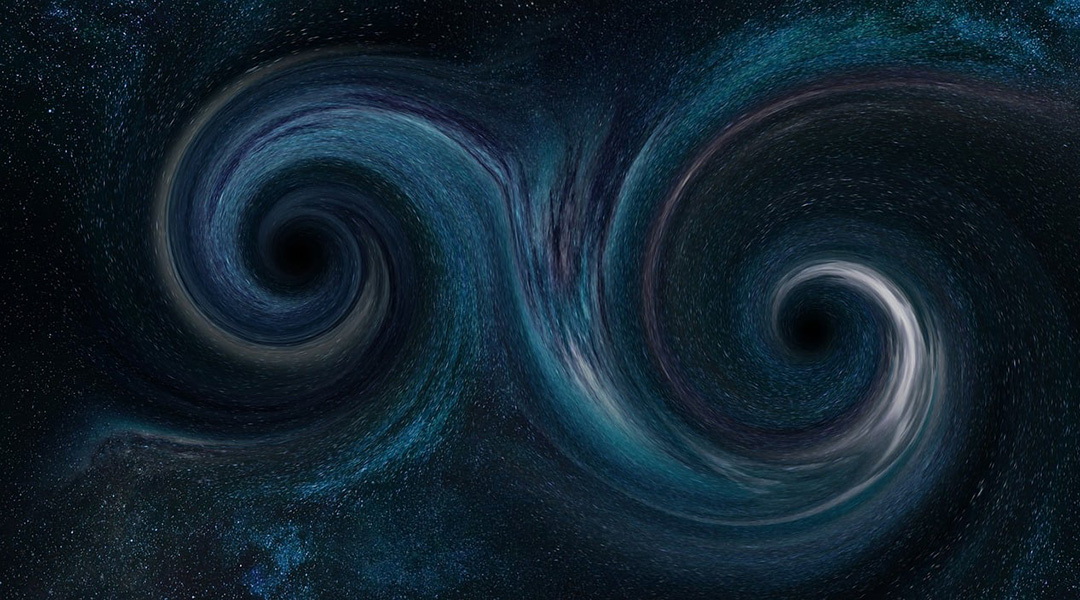Scientists are proposing an approach to imaging elusive primordial black holes. According to some theories, they emerged in early moments of the Universe, long before the birth of the first stars, and studying them could provide invaluable information about the physical processes that took place during this mysterious and little-studied era.
“Primordial black holes are black holes that emerged shortly after the Big Bang, formed by gravity in certain densely packed regions,” explained Pratibha Jangra, one of the authors of the study, in an email. “Confirming primordial black holes existence would indicate something extraordinary occurring in the early Universe.”
In a recent study, Jangra and a team of researchers from the University of Cantabria in Spain have hypothesized that they might be “visible” through the release of gravitational waves emitted during black hole mergers.
“They grew over time by swallowing nearby material,” said Jangra. “While primordial black holes are still regarded as hypothetical, their dynamics are highly captivating, generating ripples in space-time through head-on collisions known as mergers.”
These mergers produce high energy gravitational waves which cause a disturbance as they travel through the Universe. They were first identified back in 2015 using the LIGO gravitational wave detector when the telescope detected waves emitted during the merging of two black holes formed from the collapse of massive stars.
Since then, LIGO and its counterparts around the world have found dozens of other merging black hole pairs, offering valuable insights into the physics of these celestial bodies. However, their primordial predecessors have not yet been identified in this way.
Jangra and his team have suggested that some of the observed black hole collisions could actually be primordial, but the accuracy of current measurements has not allowed physicists to distinguish them from merging, collapsed stars.
The key to identifying them is another elusive entity called dark matter. Numerous astronomical observations have shown that our Universe is permeated with an enigmatic substance that does not emit, reflect, or absorb light, and which is approximately five times more abundant than ordinary matter.
Although not much is known about dark matter beyond the fact that it interacts weakly with other forms of matter, most experts believe it has existed since the beginning of the Universe, meaning that it must have interacted with primordial black holes (if they exist, of course).
Primordial black holes should have attracted dark matter in large quantities, and, as the scientists’ analysis indicates, the massive dark matter clouds that may have formed around them would have affected their motion as they merged–all details of which would be captured in the gravitational radiation emitted during the merger.
“We studied how dark matter ‘dresses’ around primordial black holes affect their interactions,” Jangra said. “Surprisingly, these dark outfits act like a toggle switch, determining whether the collision of primordial black holes speeds up or slows down. The presence of dark matter spikes influences whether primordial black holes collide quickly or take their time to merge, depending on various specific conditions.”
This implies that the gravitational waves observed by LIGO and other telescopes could have invaluable information about both the mysterious dark matter and as-yet undiscovered primordial black holes hidden within them. However, as always in physics, only actual experiments and observations can confirm any theories. Hopefully such experiments could be carried out in the near future.
“While our study does not specify a particular experiment, researchers could use our ideas to guide ongoing and future gravitational wave detectors like LIGO/Virgo/KAGRA Collaboration, LISA, and Einstein Telescope in the pursuit of signals from these mysterious pairs of primordial black holes enveloped in dark matter,” explained Jangra.
However, even before the gravitational wave detection experiments are carried out, the researchers still have a lot of work to do as in their calculations they made certain simplifications that may not be true in reality.
“In this work, we made some simplifying assumptions like the dark matter spikes either stay still or are kicked away by moving primordial black holes — valid in specific situations,” concluded Jangra. “Yet, the way primordial black holes interact with each other while surrounded by dark matter spikes can be very complex in general. So, our goal is to explore broader scenarios for a full understanding.
“We aim to figure out the complete picture of how primordial black holes and dark matter interact, investigating if spikes formed by different types of dark matter behave similarly to studied dresses. It is like assembling missing pieces of a cosmic puzzle to understand how these elements work together.”
Reference: Pratibha Jangra, Bradley J. Kavanagh, and J.M. Diego, Impact of dark matter spikes on the merger rates of Primordial Black Holes, Journal of Cosmology and Astroparticle Physics (2023). DOI: 10.1088/1475-7516/2023/11/069
Feature image credit: Placidplace on Pixabay

















